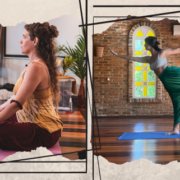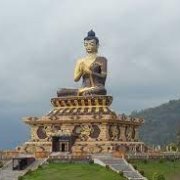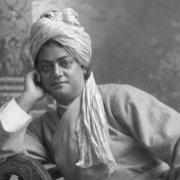The Universe of Mudras – Part I
Mudras are gestures of the hands, face and body that promote physical health, psychological balance and spiritual awakening. The Sanskrit word mudra, which is pronounced “mudraa” with the emphasis on the final “a,” can be translated as “gesture, seal, attitude or signature.” Mudras are gestures that evoke psychological and spiritual attitudes, each with its own specific quality or unique signature. The word mudra is derived from two Sanskrit root words: mud, which means “delight, pleasure or enchantment,” and rati, which means “to bring forth.” Mudras therefore bring forth our own inherent delight and enchantment, which are always present and waiting to be awakened.
The use of mudras is most strongly identified with Indian spiritual traditions in which they have been used for more than two thousand years. However, mudras are also found in various religious traditions around the world, including Christianity, where Christ is often depicted using hand gestures. Some mudras are almost universal, and one of the most easily recognized is the prayer position in which the hands are placed together in front of the heart as a symbol of reverence and devotion. Within the Indian spiritual tradition, this gesture is called Anjali mudra.
Origin and Evolution of Mudras
Gestures of the hands, face and body are part of our everyday body language. When the arms are crossed in front of the chest, it sends a message of defensiveness. When the head hangs forward, it may send a message of sadness. Clenched fists are often a sign of anger. Touching the tips of the fingers together suggests a pensive mood and raised eyebrows can show surprise or disbelief. These gestures are a non-verbal language that, often unconsciously, communicates moods, intentions and attitudes.
When gestures of the hands, face or body are consciously used to evoke psychological or spiritual attitudes, they are called mudras. Subtle qualities, such as unity and limitlessness which cannot easily be expressed within the confines of language, find full expression through the use of mudras. In Shamanism (one of the earliest forms of spirituality) sound, movement, and gestures of the hands, face and body are used to invoke the deeper sacred energies of the universe. The shaman transmits these energies through rituals that include the use of gestures to support health, healing and spiritual connection. Various forms of Shamanism are found around the globe, but in India, the impulse to unite with the sacred source of creation evolved into an in-depth science, with the practice of mudras as one of its main expressions.
The rishis, the great sages of ancient India, explored states of deep spiritual union through meditation. Mudras arose naturally as an expression of these meditative states. They were then employed to call forth these meditative experiences, thereby allowing the experiences to be shared with their initiated disciples. The ultimate wisdom revealed during the meditative experiences of the ancient seers is one of unity beyond all dualities. The journey toward unity encompasses a wide range of spiritual qualities, such as discernment, limitlessness, wholeness and compassion. Mudras are vehicles to awaken these individual qualities, leading us toward a global vision of unity.

Each of the deities within Indian art and sculpture embodies a specific spiritual quality. Many of these deities are depicted holding mudras that reflect and communicate these qualities. The many statues and images showing the deities holding mudras highlights their important role within the development of spirituality on the Indian subcontinent. Among the oldest of these images are statues and paintings of the Buddha from approximately 2,000 years ago in the Ellora and Ajanta caves in India.
During the period of Tantra in India, ranging from the fifth to the fifteenth centuries, the use of mudras evolved into the fully developed form we know today. In Tantra, the body is seen as a sacred sanctuary of spirit, a microcosm of the Divine. The transformation of the physical body into a temple of spirit occurs through the performance of elaborate rituals that make use of sacred sounds called mantras, sacred geometrical forms called yantras, and the extensive use of mudras.
Beginning in the eleventh century, the body-oriented approach of Tantra gave birth to the science of Hatha Yoga. This approach to Yoga uses the physical body as a primary vehicle for spiritual development, leading to liberation. The texts of the Hatha Yoga tradition outline the practices of Yoga within a framework of stages or limbs, which include mudra. The importance given to mudras within these texts is highlighted in numerous sutras, including the following from the seventeenth century Hatha Yoga text, the Gheranda Samhita (sutra 100):
“What more shall I tell thee? There is nothing in this world like mudras for giving quick success (along the spiritual path).”
The importance given to mudras in iconography, Tantric ritual, and the texts of Hatha Yoga demonstrates the key role they have played within the overall evolution of Indian spirituality.












